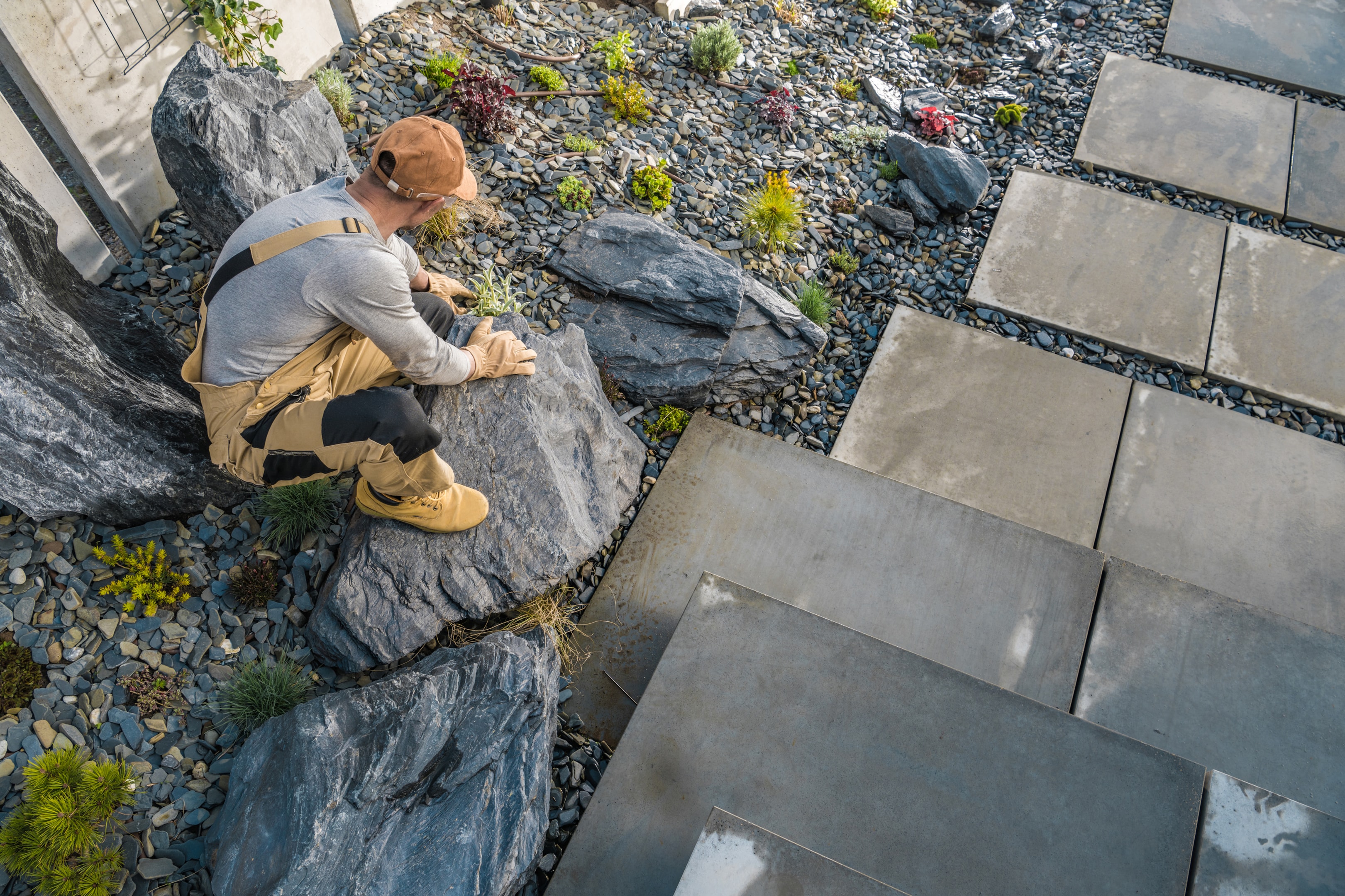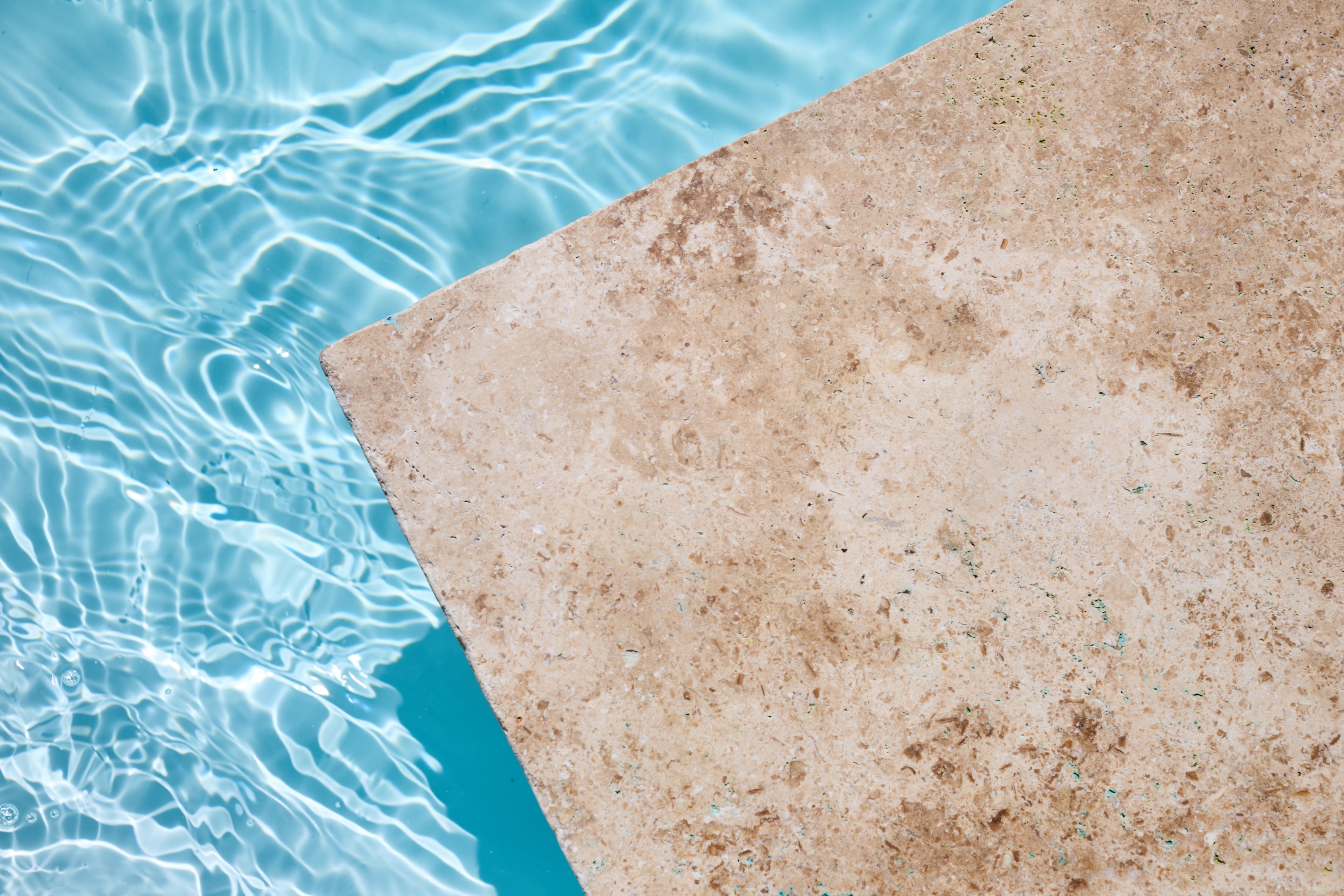Bluestone vs. Travertine Pavers for Your Walkway, Patio, or Driveway
When it comes to enhancing the aesthetic appeal and functionality of your outdoor spaces, the choice of pavers can make all the difference. Among the myriad options available, bluestone and travertine stand out as two of the most popular choices for walkways, patios, and driveways. Both materials offer unique advantages, and understanding their characteristics can help you make an informed decision for your next landscaping project.
Understanding Bluestone

What is Bluestone?
Bluestone is a type of sandstone known for its dense, durable nature and striking blue-gray color. It is primarily quarried in the northeastern United States, particularly in New York and Pennsylvania. Bluestone has been a favorite for outdoor paving projects due to its natural beauty and resilience.
Advantages of Bluestone
- Durability and Strength: Bluestone is exceptionally strong and can withstand heavy loads, making it an ideal choice for driveways and high-traffic areas.
- Aesthetic Appeal: The natural blue-gray hues of bluestone provide a timeless, elegant look that can complement a wide range of architectural styles.
- Versatility: Bluestone can be cut into various shapes and sizes, allowing for customized designs and patterns.
- Slip Resistance: The textured surface of bluestone provides excellent traction, reducing the risk of slipping, even when wet.
- Weather Resistance: Bluestone is highly resistant to weathering, making it a long-lasting option for outdoor use.
Considerations with Bluestone
- Cost: Bluestone can be more expensive than other paving materials due to its quality and durability.
- Maintenance: While relatively low maintenance, bluestone can develop a patina over time, which may require periodic cleaning to maintain its original appearance.
- Heat Retention: Bluestone can become quite hot in direct sunlight, which may be a consideration for areas with high foot traffic during the summer months.
Understanding Travertine

What is Travertine?
Travertine is a type of limestone formed by mineral deposits from natural springs. It has been used in construction for thousands of years and is renowned for its unique texture and warm, earthy tones. Travertine is commonly sourced from Italy, Turkey, and other regions with rich deposits.
Advantages of Travertine
- Natural Beauty: Travertine offers a luxurious look with its warm colors and unique veining, making it a popular choice for patios and walkways.
- Cool Underfoot: Travertine stays relatively cool, even in hot climates, making it comfortable for barefoot walking.
- Variety of Finishes: Travertine is available in various finishes, including polished, honed, tumbled, and brushed, allowing for different aesthetic effects and slip resistance levels.
- Eco-Friendly: Travertine is a natural stone that doesn’t require extensive processing, making it an environmentally friendly choice.
- Durability: Travertine is durable and can last for decades with proper care.
Considerations with Travertine
- Porosity: Travertine is more porous than bluestone, making it more susceptible to staining and requiring sealing to protect its surface.
- Maintenance: Travertine requires regular sealing and cleaning to maintain its appearance and prevent damage from moisture and staining.
- Softness: Travertine is softer than bluestone, which makes it less ideal for high-traffic areas like driveways.
- Cost: While generally less expensive than bluestone, high-quality travertine can still be a significant investment.
Comparing Bluestone and Travertine for Your Project
When deciding between bluestone and travertine for your walkway, patio, or driveway, it’s essential to consider various factors, including the specific requirements of your project, your aesthetic preferences, and your budget.
Aesthetic Preferences
Both bluestone and travertine offer distinct visual appeal. Bluestone’s blue-gray hues provide a modern, sleek look, while travertine’s warm tones evoke a classic, Mediterranean feel. If you’re aiming for a contemporary design, bluestone may be the better choice. On the other hand, if you’re seeking a more traditional or rustic look, travertine could be ideal.
Functionality and Use
For driveways and high-traffic walkways, bluestone’s strength and durability make it a superior choice. Its resistance to heavy loads and weathering ensures longevity and minimal maintenance. Travertine, with its softer texture and higher porosity, is better suited for patios and pool decks where aesthetics and comfort underfoot are more critical.
Climate Considerations
The climate of your location plays a crucial role in determining the best material for your project. In hot climates, travertine’s ability to stay cool underfoot can enhance comfort, especially around pool areas and patios. In contrast, bluestone’s heat retention may make it less comfortable for barefoot walking in such environments.
Maintenance and Longevity
Maintenance is another key consideration. Bluestone’s lower porosity and higher resistance to staining and weathering mean less frequent maintenance and longer lifespan. Travertine, while durable, requires regular sealing and more meticulous care to prevent staining and damage from moisture.
Budget
Your budget will also influence your choice. Bluestone’s higher initial cost can be offset by its durability and lower maintenance requirements over time. Travertine, while potentially less expensive upfront, may incur higher maintenance costs due to the need for regular sealing and cleaning.
Installation Tips for Bluestone and Travertine
Regardless of your choice, proper installation is critical to the performance and longevity of your pavers. Here are some general tips for installing bluestone and travertine:
Bluestone Installation Tips
- Base Preparation: Ensure a well-compacted base to provide a stable foundation for the bluestone pavers.
- Proper Drainage: Incorporate proper drainage to prevent water accumulation and potential damage to the pavers.
- Spacing and Jointing: Maintain consistent spacing between pavers and use appropriate jointing material to accommodate natural expansion and contraction.
- Sealing: Although not always necessary, sealing bluestone can enhance its appearance and provide additional protection against stains and weathering.
Travertine Installation Tips
- Sealing: Seal travertine before installation to protect it from moisture and staining. Reapply sealant periodically to maintain protection.
- Base Preparation: Like bluestone, ensure a well-compacted base for stability.
- Spacing and Jointing: Use appropriate jointing material to accommodate expansion and contraction and prevent shifting.
- Cleaning: Regularly clean travertine to prevent buildup of dirt and stains.
Real-World Applications and Examples
To help visualize how bluestone and travertine can transform your outdoor spaces, here are a few real-world applications and examples:
Bluestone Walkways and Patios
- Modern Walkway: A sleek bluestone walkway leading to a contemporary home, flanked by minimalist landscaping for a clean, sophisticated look.
- Rustic Patio: A bluestone patio in a rustic setting, with irregularly shaped pavers creating a natural, organic feel. Complemented by wooden furniture and lush greenery, this setup offers a serene retreat.
- Driveway: A robust bluestone driveway capable of withstanding heavy vehicles while providing a visually appealing entrance to your home.
Travertine Walkways and Patios
- Mediterranean Patio: A travertine patio with warm, earthy tones, adorned with potted plants, wrought iron furniture, and a pergola for a Mediterranean-inspired outdoor living space.
- Pool Deck: Travertine pavers around a swimming pool, offering a cool, slip-resistant surface that’s perfect for barefoot walking and lounging by the water.
- Garden Path: A charming travertine garden path meandering through a lush garden, enhancing the natural beauty of the landscape with its unique veining and texture.
Final Thoughts on Bluestone Vs. Travertine Pavers
Choosing between bluestone and travertine pavers ultimately depends on your specific needs, preferences, and the characteristics of your outdoor space. Both materials offer unique advantages that can significantly enhance the beauty and functionality of your walkways, patios, or driveways.
If you prioritize durability, strength, and a modern aesthetic, bluestone may be the ideal choice for you. Its resilience and timeless appeal make it a versatile option for various applications, from driveways to high-traffic walkways.
On the other hand, if you seek a luxurious, classic look with a comfortable underfoot feel, travertine could be the perfect fit. Its natural beauty and variety of finishes make it a popular choice for patios and pool decks, where aesthetics and comfort are paramount.
By carefully considering the factors outlined in this blog, you can make an informed decision that aligns with your vision and enhances the overall appeal of your outdoor spaces. Whether you choose bluestone or travertine, both materials offer the potential to create stunning, functional landscapes that you can enjoy for years to come.
Work With a Design and Build Landscaper in Northern Virginia
At State of the Art Landscape, we understand the significance of selecting the right materials for your outdoor spaces to achieve both beauty and functionality. Our team of experts is dedicated to helping you choose between bluestone and travertine pavers, ensuring that your walkways, patios, and driveways not only look stunning but also stand the test of time.
Explore our comprehensive residential design and build services to discover how we can transform your outdoor areas into captivating, durable spaces that enhance the overall appeal and value of your property. Let us help you create the perfect landscape tailored to your vision and lifestyle. Contact us today to get started.
